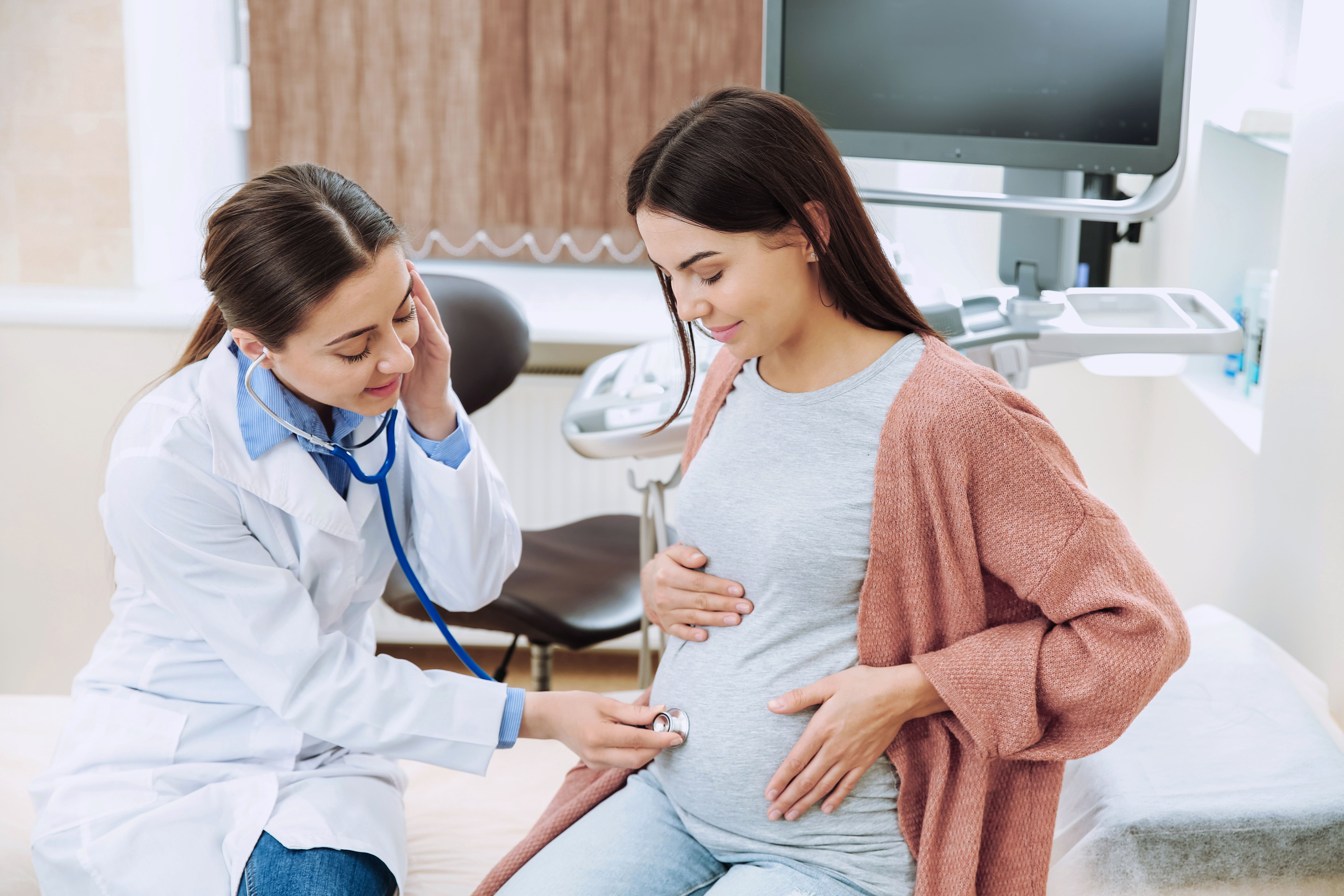Neonatal outcomes of maternal fever from epidural analgesia
In a recent study, maternal fever was more common in patients who received epidural analgesia and was associated with adverse neonatal outcomes.
Neonatal outcomes of maternal fever from epidural analgesia | Image Credit: © Pixel-Shot - © Pixel-Shot - stock.adobe.com.

Intrapartum epidural-associated fever is more likely in patients undergoing epidural analgesia (EA), often leading to adverse perinatal outcomes, according to a recent study published in The Journal of Maternal-Fetal & Neonatal Medicine.
EA has been known as a safe and effective method for relieving pain in women undergoing labor for 2 decades. However, multiple studies have associated EA with increased risk of epidural-associated fever, and concerns have arisen over epidural-related maternal fever (ERMF) during labor being associated with adverse events in parents or neonates.
Current understanding of mechanisms associated with epidural-associated feveris lacking. Non-pregnant and pregnant women receiving epidural or spinal anesthesia for cesarean delivery have not seen increased ERMF rates, and pyrexiahas been more common in cases of ERMF even without bacteriological evidence of infections.
To determine the risk factors associated with ERMF and the effects on mothers and infants, investigators conducted a retrospective study using data from the electronic medical records system of the Maternity and Child Health Hospital of Songjiang District, Shanghai, China. Data on births in hospitals from January to June 2021 was used in the analysis.
Women with full-term singleton pregnancy, scheduled vaginal in-hospital delivery, vertex presentation, and willingness to use patient-controlled epidural analgesia (PCEA) were eligible for the study. Women with pre-pregnancy hypertension, diabetes before pregnancy, multiple pregnancies, and stillbirth were excluded from the analysis.
After exclusion, there were 208 women who underwent EA included in the analysis, and 117 controls who did not undergo EA and gave birth in the same period. The women who underwent EA were placed in an ERMF group or a no-fever group.
Every 60 minutes starting at onset of labor and ending at delivery, patients’ body temperature was recorded using an infrared ear thermometer. ERMF was defined as intrapartum fever related to EA administration during labor. Fever was treated using prophylactic antibiotics and fluid replacement.
PCEA was used in women when regular contractions and cervical dilation at 2 to 3 cm were observed. A test dose of analgesia included 1:200,000 adrenaline and 1.5% lidocaine. A 10 mL bolus of ropivacaine 0.075%and0.5 μg/mL sufentanil was added after 5 minutes. Patient sensitivity to temperature after 15 minutes was used to evaluate analgesic level.
During the first prenatal visit, data on reproductive history, maternal demographics characteristics, and anthropometric characteristics were collected.Analgesic data was also gathered, including EA duration, total EA, and PCEA doses. Body temperature, duration of labor, frequency of cervical examinations, and conversions to obstetric forceps were evaluated.
Complications of pregnancy included preeclampsia, intrahepatic cholestasis of pregnancy, gestational diabetes mellitus, and gestational hypertension. Hemoglobin concentration under 100 g/L at sea level during pregnancy was considered pregnancy anemia. Neonatal infections were diagnosed in presentations of fever, vomiting, jaundice, dyspnea, or other symptoms.
Women who received an EA were aged a mean 28.76 years, while those who did receive an EA were aged a mean 30.03 years. Of the 208 women receiving an EA, 42 presented with maternal fever, compared to 1 of 117 without an EA. Women with ERMF were less often gravid and nulliparous.
Age, height, body mass index, and gestational weeks were similar between fever and no fever groups, but white blood cell and neutrophil counts were higher in women with ERMF. Total EA given and total amount of drugs given were significantly higher in the fever group than the no fever group. An average 338.95 ± 55.16 minutes passed between EA administration and fever onset.
Women with ERMF were also more likely to have more frequent cervical examinations, longer first-stage labor, and total labor time, and decreased postpartum hemorrhage volume. This group was significantly more likely to convert to surgery but did not have a significantly different rate or risk of forceps delivery.
Neonatal outcomes among women with an EA included a lower of Apgar score of 5-min, higher fetal distress in women with fever, and increased risk of neonatal infections in the fever group. The 1-min Apgar score and rate of neonatal intensive care unit admissions did not significantly differ between groups. However, the cesarean section rate was greater in the ERMF group.
When evaluating the correlation between rates and risks of ERMF, positive correlations were found for labor time, total drug dosage, and EA duration. Development of ERMF was more likely in women with a longer first stage labor time, total labor time, and EA duration.
Intrapartum fever was more often reported after EA, which led to increased risks of surgery conversions and neonatal outcomes. Investigators recommended limiting the number of cervical examinations, duration of EA, and total labor time.
Reference
Wang H, Yang Z, Wei S, et al.Perinatal outcomes and risk factors for epidural analgesia-associated intrapartum maternal fever: a retrospective study. The Journal of Maternal-Fetal & Neonatal Medicine. 2023;36(1). doi:10.1080/14767058.2023.2179383
S1E4: Dr. Kristina Adams-Waldorf: Pandemics, pathogens and perseverance
July 16th 2020This episode of Pap Talk by Contemporary OB/GYN features an interview with Dr. Kristina Adams-Waldorf, Professor in the Department of Obstetrics and Gynecology and Adjunct Professor in Global Health at the University of Washington (UW) School of Medicine in Seattle.
Listen
Similar delivery times between misoprostol dosages among obese patients reported
May 29th 2024A recent study found that obese patients undergoing induction of labor experienced similar delivery times regardless of whether they received 50 μg or 25 μg of vaginal misoprostol, though multiparous patients showed faster delivery with the higher dosage.
Read More
Buprenorphine use in pregnancy linked to decreased fetal breathing movements
May 18th 2024According to a poster presented at ACOG 2024, use of the synthetic opioid buprenorphine depressed fetal breathing in biophysical profile assessments, but had no significant impact on other factors like amniotic fluid index or fetal tone.
Read More
